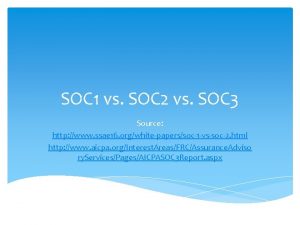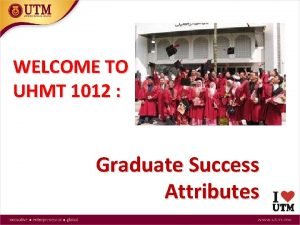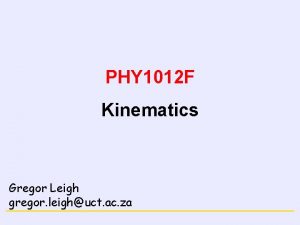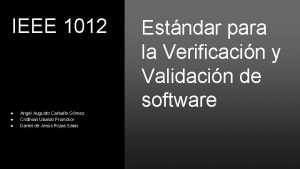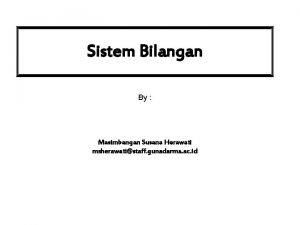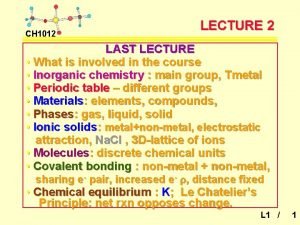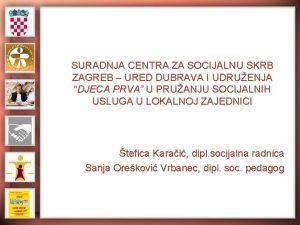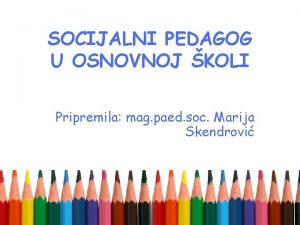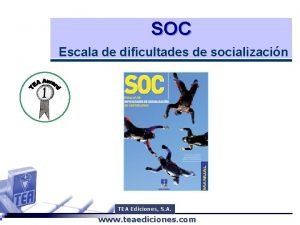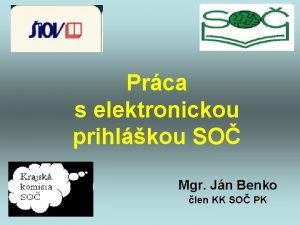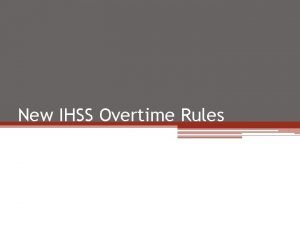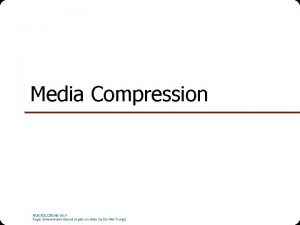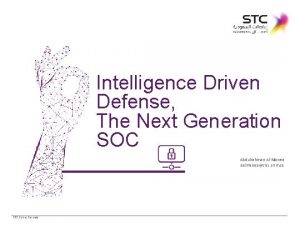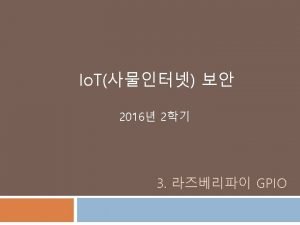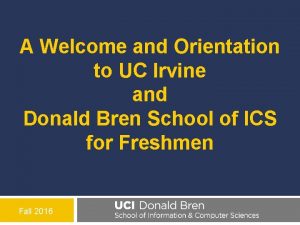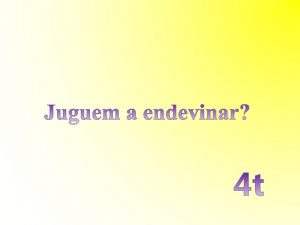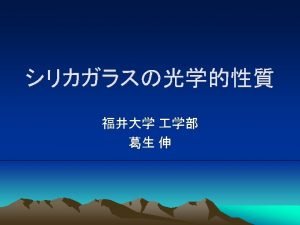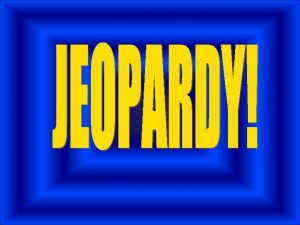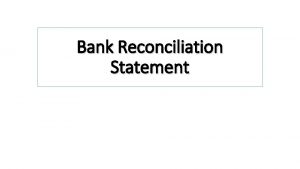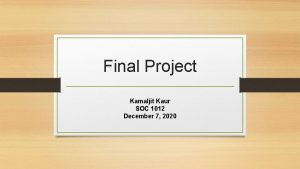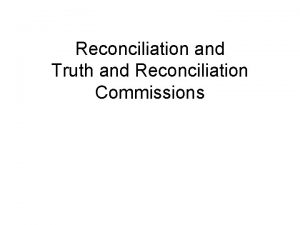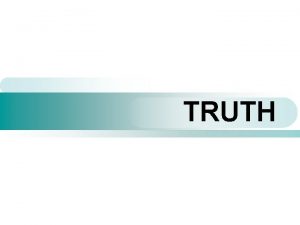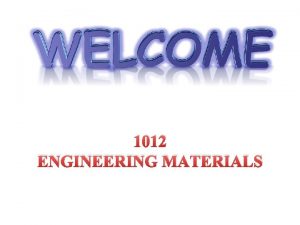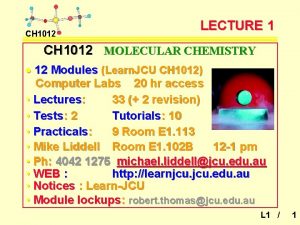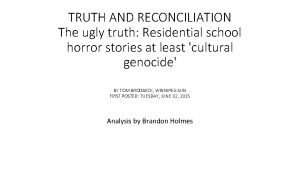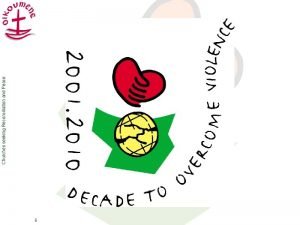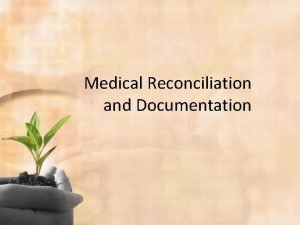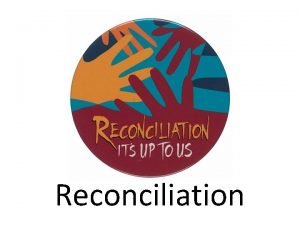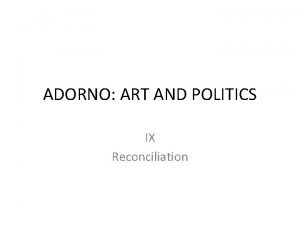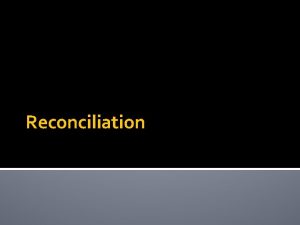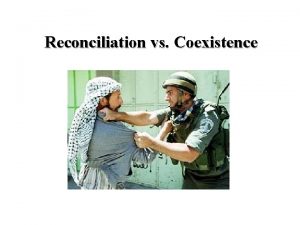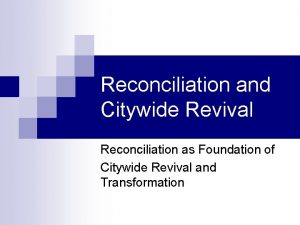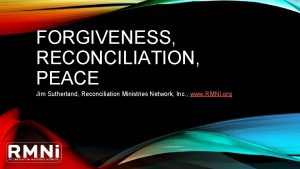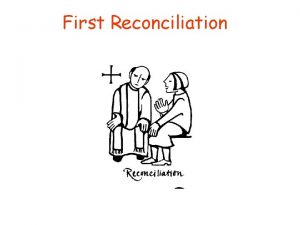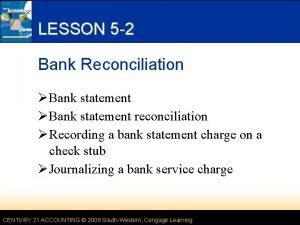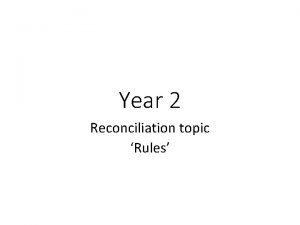Truth and reconciliation Truth SOC 1012 Final project
























- Slides: 24

Truth and reconciliation Truth SOC 1012 Final project Name: Bipana Tamang

Section one: Introduction Lasso fya. Phulla! (Greeting in my language) Hello everyone! My name is Bipana Tamang, a Developmental Service Worker student (third semester), at Cambrian college. I am originally from Nepal and residing here in Sudbury as an international student since last January only. The Truth and reconciliation course for is not just an optional course but it holds a lot of meaning to me. Personally, I belong to an indigenous community (Tamang) of my country Nepal. Therefore, my prime motive in choosing this course is to learn more about such communities as mine around the globe. Having studied Indigenous Art and Culture in first semester as well, I wanted to add more to my knowledge and continue learning further regarding the indigenous topic. My hobbies includes reading books, drawing/coloring, cooking, travelling and so on. In the future, I see myself as a medical professional. I am so proud of my background and culture and I simply hope to share it with the world that is unknown about it. I truly believe that we are all same afterall, despite the differences. Human breeds embracing the difference and similarities that we share.

Glimpse of my cultural

Co relating two different background: Nepali and Canadian. What is my identity you ask? I would simply answer Bipana Tamang, a nepali, belonging to the Tamang indigenous community. What does that mean? It means that I am first representing my country Nepal and then, my community Tamang simultaneously, with which comes my Culture, tradition and language. I have two identity, a nepali but indigenous. My country does not celebrate Independence day because it was never colonized or under any foreign rule, however it did experience some discrimination within the vast majority of communities leveling them as high and low. Nepal has legally recognized 59 indigenous nationalities, referred to as Adivasi Janajati under the National Foundation for Development of Indigenous Nationalities (NFDIN) Act 2002, and I am one of them. Every country has its own history of indigenous community and in context of mine, we did not undergo as extreme trauma as the Canadian Indigenous, however we sure were highly marginalized and disadvantaged, and some were even endangered. After a long fight for our right and justice, we the Adivasi Janajati of Nepal finally have the rights and justice we deserve. Now, we live in peace, harmony and unity. Now, in reference to the Canadian Indigenous history, it is very extreme and dark. My rationale for co relating my background and the Canadian one, is to highlight on the fact that we fought our battle to protect and preserve our culture and language because that was our identity and what defines us, for our existence. And if we see it, that is what the Canadian Indigenous has been doing for years. The question here is, has they succeed yet, like us? Sadly, NO. The battle is ongoing, and the victory is yet to be served. And with hope, we can achieve it if all of us work together on it with the government.

continued • I am, by no means trying to compare the two situation of different country and say that one is not yet successful because it put no effort. But what I’m trying to emphasize here is that the journey of Truth and Reconciliation takes a long time, but in order for it to be successful, it requires the continuous patience and joint effort of the government and the people. We should not loose hope and keep trying and the beautiful day of victory will sure be served in the favor of the ones that deserves. Just like me, I hope the Canadian Indigenous people takes as much pride to introduce themselves as Canadian and an indigenous of the country, as I do to introduce myself as Nepali and Tamang. Moreover, I hope the Canadian and the government takes bigger pride to respect and reflect its Indigenous culture to the world. Despite the dark history, a healthy and friendly reconciliation is very vital. • I am so surprised at how similar the culture and tradition of Canadian indigenous is to mine. So, I could not help relate it both. ( given picture for reference). Although I could not describe well in words, I hope you understand what I’m trying to convey. Different yet so similar cultures from two different part of the world, Isn't it amusing ? It sure is and deserves the recognition and respect it deserves. OPTIMISM and patience is the key a beautiful growth and raise.

What is residential school? • Before anything else, we need to know what residential school is. Residential schools were government-sponsored religious schools that were established to assimilate Indigenous children into Euro-Canadian culture. I cannot do justice with my words for the trauma, pain and sufferings that indigenous people went through because of residential school. So, to better understand the dark history of residential school please go through the article and video I have linked below. Thankyou. • https: //youtu. be/9 Te. W 4 h. W 1 QD 0 • https: //www. thecanadianencyclopedia. ca/en/article/resi dential-schools

Section two: Introduction to Call to action • In order to readdress the legacy of residential schools and advance the process of Canadian reconciliation, the Truth and Reconciliation Commission made the 94 calls to action. All of the Call to actions are undoubtedly crucial and none of it is inferior but rather equally important and meaningful to the indigenous people, and I would love to know more about it all. However, at the moment if I have chosen the language and culture calls to action. The Calls is presented as: • Language and culture 13 -17 • We call upon the federal government to acknowledge that Aboriginal rights include Aboriginal language rights. • We call upon the federal government to enact an Aboriginal Languages Act that incorporates the following principles: • Aboriginal languages are a fundamental and valued element of Canadian culture and society, and there is an urgency to preserve them. • Aboriginal language rights are reinforced by the Treaties. • The federal government has a responsibility to provide sufficient funds for Aboriginal-language revitalization and preservation. • The preservation, revitalization, and strengthening of Aboriginal languages and cultures are best managed by Aboriginal people and communities. • Funding for Aboriginal language initiatives must reflect the diversity of Aboriginal languages. • We call upon the federal government to appoint, in consultation with Aboriginal groups, an Aboriginal Languages Commissioner. The commissioner should help promote Aboriginal languages and report on the adequacy of federal funding of Aboriginal-languages initiatives. • We call upon post-secondary institutions to create university and college degree and diploma programs in Aboriginal languages. • We call upon all levels of government to enable residential school Survivors and their families to reclaim names changed by the residential school system by waiving administrative costs for a period of five years for the name-change process and the revision of official identity documents, such as birth certificates, passports, driver’s licenses, health cards, status cards, and social insurance numbers.

Update of the progress Completed Call to action 13: Acknowledge that Aboriginal rights include Aboriginal language rights. In progress-Project underway Call to action 14: Enact an Aboriginal Language Act Call to action 15: Appoint an Aboriginal Languages Commissioner Call to action 16: Create university and college degree and diploma programs in Aboriginal languages Call to action 17: Waive administrative costs for five years for revision of official identity documents. It is quite disappointing and surprising that only one call to action is completed while others are still in progress. I just hope that its better late than never.

Why the language and culture call to action? ? • Personally, for me language and culture are prime identity of any community or group, that defines their history and background. Language is the foundation of a culture. When a language dies so does the link to the cultural and historical past. Without that crucial connection to their linguistic and cultural history, people lose their sense of identity and belonging. Indigenous languages keep people connected to culture and this strengthens feelings of pride and selfworth and the cultural knowledge, kinship, and stories are reliant on language in order for these important cultural elements to be passed on from generation to generation. For indigenous peoples, languages not only identify their origin or membership in a community, they also carry the ethical values of their ancestors. Sadly, many Indigenous languages are endangered globally, and the rate of loss is estimated at one language every two weeks. There are over 60 Indigenous languages spoken across Canada, which are categorized into 12 distinct language families, however Indigenous, Métis, and Inuit languages are often described as “dying” or disappearing. • The TRC report also includes many stories of Indigenous languages being spoken in secret, demonstrating the resiliency and resistance. Their efforts, language loss has been significant and continues to be a critical factor in reconciliation efforts today. In its report, the TRC (2015) emphasized the important connection between culture and language: “language is necessary to define and maintain a world view. For this reason, some First Nation elders to this day will say that knowing or learning the native language is basic to any deep understanding of a First Nation way of life, to being a First Nation person” (Executive Summary, p. 152). In its calls to action, the TRC (2015) called on the “federal government to acknowledge that Aboriginal rights include Aboriginal language rights” (Executive Summary, p. 155). The TRC (2015) has also called upon post-secondary institutions to “create university and college degree and diploma programs in Aboriginal languages” (Executive Summary, p. 157). This call to action recognizes that colleges and universities can play a pivotal role in supporting Indigenous languages and in reconciliation more broadly. •

continued English and French is the main language spoken in Canada. Can we raise our question why not indigenous language? That is when true change and reconciliation will start from. That is when people will feel the obligation to learn about the history of indigenous. That is the change I want to forward through this call of action. Therefore, we can vocalize our support for the Truth and Reconciliation Commission’s call to action for language by reading the Indigenous Languages Act and staying abreast on the response to the Act. We all know how important language and culture is to everyone, especially indigenous people because it is the only source that identifies them as humans and preserves their identity in this dehumanizing world. If there is no language and culture, there is no indigenous identity. That is why I find it extremely crucial to address this action prior. So, I am personally very interested in this call to action I also look forward to learning more about it and give my best effort to contribute as much as I can. It is specially important for Canadian and is their duty in order to learn about its history and be responsible for their action on how they treat people and contribute positively in the reconciliation process. I relate to this on personal level so much because being an international indigenous student myself, I feel like my culture and language is what differentiates and defines me in first place than any other thing in a foreign land. I am very proud of it and I hope everyone to feel same way about their language and culture. Every language and culture should be treated equally without one being considered superior to the others. And thus, change is to be initiated from our individual side.

Section three: Celebrate the good work • The journey of Truth and Reconciliation took a long time and is still ongoing. It goes nowhere without celebrating the good work, meaning to honor the ongoing effort of organizations, people or any other things that is putting in an effort and working for the betterment of the indigenous community.

Cambrian College Introduces new General Arts and Science Program with Indigenous Specialization • Cambrian College is offering a new program to provide Indigenous students a unique, culturally relevant pathway to a college education. The one-year General Arts and Science-Indigenous Specialization certificate program combines Indigenous programming with other core academic courses in English and math. Students will also have the opportunity to take Indigenous language courses. "This program is a collaborative response to the voices of our Indigenous communities, faculty and students who want accessible, culturally relevant programs for Indigenous students, ” says Bradie Granger, Chair of General Studies at Cambrian College. “What makes this program unique is that students will focus on developing a personal understanding of their own Indigenous heritage, culture and language as well as develop a sense of community within the college. "Graduates of the new program will earn valuable transfer credits that can be put toward further education at Cambrian or other post-secondary institutions. For those who choose to enter the workforce instead, they will be prepared to take on new challenges and opportunities with the skills they acquired. While developed with Indigenous students in mind, the new General Arts and Science – Indigenous Specialization program will benefit any student wanting a truly inclusive and multi-cultural experience on campus while they explore an education or career path that is right for them. You may Learn more about Cambrian’s new General Arts and Science-Indigenous Specialization program . www. cambriancollege. ca/programs. a https: //cambriancollege. ca/indigenous-students/wabnode-centre-for-aboriginal-services/

Continued: Celebrate the good work Indigenous Languages and Cultures Program The objectives of the Indigenous Languages and Cultures Program are to: • strengthen Indigenous cultural identity and participation in Canadian society • preserve and revitalize Indigenous languages and cultures • The Indigenous Languages and Cultures Program offers two funding components to eligible Indigenous organizations

Indigenous Languages Component • The Indigenous Languages Component supports the reclamation, revitalization, maintenance, and strengthening of Indigenous languages through communitydriven activities. Expected results include the following: • Indigenous communities have access to resources to deliver activities that incorporate Indigenous languages • Indigenous individuals and groups are engaged in activities that strengthen Indigenous languages • Indigenous individuals and groups are engaged as an integral part of Canadian society and embrace and share their languages with other Canadians • Read more about who can apply for funding through the Indigenous Languages Component of the Indigenous Languages and Cultures Program. •

Northern Aboriginal Broadcasting • The Northern Aboriginal Broadcasting component supports the production and distribution of Indigenous audio and video content. • The objectives of the Northern Aboriginal Broadcasting component are to: • support the production of culturally-relevant Indigenous programming • facilitate establishment and maintenance of production facilities • ensure availability of a significant amount of radio and television programming • contribute to the protection and enhancement of Indigenous languages and cultures • provide venues to articulate issues of relevance to Indigenous audiences and communities • Read more about who can apply for funding through the Northern Aboriginal Broadcastingcomponent of the Indigenous Languages and Cultures Program.

Indigenous Languages Component — Indigenous Languages and Cultures Program • The Indigenous Languages Act received Royal Assent on June 21, 2019. The Department is collaborating with Indigenous organizations to implement the Act and to develop a new approach to investing in Indigenous languages. While this work is being carried out, funding for 2020 -2021 will be delivered through the Indigenous Languages Component of the Indigenous Languages and Cultures Program. • The Indigenous Languages Component (formerly known as the Aboriginal Languages Initiative) supports the reclamation, revitalization, maintenance, and strengthening of Indigenous languages through community-driven activities. • Please visit the website linked below to learn more on how to apply, who can apply, eligible projects and so on. • https: //www. canada. ca/en/canadianheritage/services/funding/aboriginal-peoples/languages. html

Aboriginal Language Organizations • Aboriginal Studies at the University of Toronto The Aboriginal Studies Program focuses on the languages, cultures, histories, creativity and well-being of Indigenous Peoples. Courses are available in Oneida, Inuktitut and Ojibwa. • Canadian Linguistic Association (CLA/ACL) • The Canadian Linguistic Association (CLA), which was founded in 1955, has as its aim the promotion of the study of languages and linguistics in Canada. It houses the CLA Aboriginal Languages Committee. • CLA Statement on Aboriginal Language Rights In this statement, the CLA addresses some of the issues surrounding Aboriginal/First Nations languages of Canada, and advocates for the protection, maintenance, and revival of Aboriginal/First Nations languages. • First Peoples’ Cultural Council (FPCC) FPCC is a provincial Crown Corporation formed by the government of British Columbia in 1990 to administer the First Peoples’ Heritage, Language and Culture Program. Its mandate is to assist B. C. First Nations in their efforts to revitalize their languages, arts and cultures. • Society for the Study of the Indigenous Languages of the Americas (SSILA) SSILA was founded in December 1981 as the international scholarly organization representing American Indian linguistics. Membership in SSILA is open to all those who are interested in the scientific study of the languages of the native peoples of North, Central and South America. • Task Force on Aboriginal Languages and Cultures “Towards a New Beginning: A Foundational Report for a Strategy to Revitalize First Nation, Inuit and Métis Languages and Cultures” is the result of the Task Force’s mandate to conduct research and make recommendations to the Minister of Canadian Heritage on the preservation, revitalization and promotion of Aboriginal languages.

What’s happening so far? • There has not been tremendous changes and implementations. The link below explains how the Government of Canada is responding to the Truth and Reconciliation Commission's Calls to Action 13 to 17. Please go through it once to know what’s happening with the language and culture call to action. • https: //www. rcaanccirnac. gc. ca/eng/1524495846286/1557513199083

Additional resources for celebration of good works • https: //www. rcaanccirnac. gc. ca/eng/1524495846286/1557513199083 • https: //www. noslangues-ourlanguages. gc. ca/en/ressourcesresources/autochtones-aboriginals/evenements-events-eng • https: //continuingstudies. uvic. ca/culture-museums-and-indigenousstudies/topics/indigenous-language-and-culture • https: //www. canadahelps. org/en/indigenous-culture-and-languageresurgence-fund/

Section Four: Call for More Firstly, please enlighten yourself with all the 94 calls to action, linked below: http: //trc. ca/assets/pdf/Calls_to_Action_English 2. pdf https: //www. cbc. ca/news/politics/truth-and-reconciliation-94 -calls-to-action-1. 3362258 What now? You have already done a great job educating yourself about the Canadian indigenous history. Now it is all up to you to decide what you want do next. Are you overwhelmed with all the information? Don’t worry, I was too. But I decided to continue further and explore more, which led me to next dimension of realization, and the urge to work and contribute for better change. So, I want you to walk with me in this journey and contribute to an essential learning process. As important as the Call to actions are, so is your will to explore it. Please, take your time to reflect on this topic and we are always here when you want to get back and continue your learning journey. It will be overwhelming, demanding but I promise it will be healing, impactful and for better change. Absolutely worth your time. Ask to yourself, what is your language, why do you speak it, why is it important, why is it that your culture holds so much importance to you? The answer will be similar for every individual answering it. It describes why language and culture is important. So why is there prejudice and discrimination on the matter that absolutely should rather be cherished and respected equally? Every Canadian must be obliged to learn about its history. It is our prime duty. Are you together for the change that we have been talking about all this time? If so, join me. CULTURE AND LANGUAGE: My CALL FOR COALITION

RESOUCES To learn more Below are some You. Tube videos and articles to help you learn more about the residential school, TRC call to actions, survivor’s story, and so on. Please give it a watch or read, they are heartbreaking, sad, yet informative and helpful for our learning and understanding of the indigenous history. Has there been progress to implement the TRC’s calls to action? Depends on who you ask https: //www. aptnnews. ca/national-news/trc/ SENATOR MURRAY SINCLAIR’S CHALLENGE https: //next 150. indianhorse. ca/challenges/94 -calls-to-action Beyond 94 https: //newsinteractives. cbc. ca/longform-single/beyond-94? &cta=1

continued Residential Schools in Canada: A Timeline The history of residential schools in Canada can be traced as far back as the 17 th century. Watch the “Residential Schools in Canada Timeline” video to learn about the significant dates in its history — from the landing of Jesuits in what is now known as Quebec, to the release of the Truth and Reconciliation Commission of Canada’s final report in 2015. https: //www. youtube. com/watch? v=VFg. NI 1 lfe 0 A Namwayut: we are all one. Truth and reconciliation in Canada Chief Robert Joseph shares his experience as a residential school survivor and the importance of truth and reconciliation in Canada. https: //www. youtube. com/watch? v=2 zu. RQmwa. REY

References • Cambrian College Introduces new General Arts and Science Program with Indigenous Specialization. (2020, January 20). Retrieved December 07, 2020, from https: //cambriancollege. ca/news/2020/01/cambrian-college-introducesnew-general-arts-and-science-program-with-indigenous-specialization/ • Government of Canada; Indigenous and Northern Affairs Canada. (2019, September 05). Language and culture. Retrieved December 07, 2020, from https: //www. rcaanc-cirnac. gc. ca/eng/1524495846286/1557513199083 • Indigenous languages-Organizations and events. (2020, June 17). Retrieved December 07, 2020, from https: //www. noslangues-ourlanguages. gc. ca/en/ressources-resources/autochtones-aboriginals/evenementsevents-eng • Indigenous Language Preservation Courses and Programs. (n. d. ). Retrieved December 07, 2020, from https: //continuingstudies. uvic. ca/culture-museums-and-indigenous-studies/topics/indigenous-language-andculture • Residential Schools in Canada. (n. d. ). Retrieved December 07, 2020, from https: //www. thecanadianencyclopedia. ca/en/article/residential-schools • Support Indigenous Culture and Language Resurgence in the Canadian North. (2020, November 25). Retrieved December 07, 2020, from https: //www. canadahelps. org/en/indigenous-culture-and-language-resurgence-fund/ • Wabnode Centre for Indigenous Services. (2018, July 26). Retrieved December 07, 2020, from https: //cambriancollege. ca/indigenous-students/wabnode-centre-for-aboriginal-services/

 Soc1 vs soc2
Soc1 vs soc2 Uhmt
Uhmt 1012
1012 1012 angel
1012 angel Sistem bilangan desimal adalah
Sistem bilangan desimal adalah Ch 1012
Ch 1012 Workday data security
Workday data security Socijalni rad dubrava
Socijalni rad dubrava Mag paed soc
Mag paed soc Soc tea
Soc tea Siov soc
Siov soc Soc 2255
Soc 2255 Soc cissp
Soc cissp Nus soc ffmpeg
Nus soc ffmpeg Intelligence driven defense
Intelligence driven defense Ibm security operation center
Ibm security operation center Raspberry pi gpio4
Raspberry pi gpio4 Ss800-ag-man-010/p-9290
Ss800-ag-man-010/p-9290 Uci web soc
Uci web soc 60's greaser fashion
60's greaser fashion Lông vằn lông vện mắt xanh
Lông vằn lông vện mắt xanh No soc escarabat ni grill
No soc escarabat ni grill Xilinx soc
Xilinx soc J. ceram. soc. jpn
J. ceram. soc. jpn Soc 2022
Soc 2022
